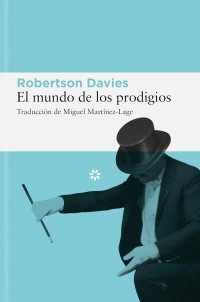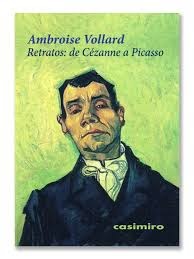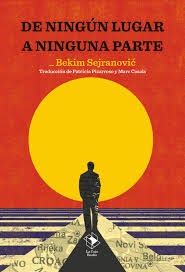
Review of the book “The World of Wonders”, by Robertson Davies
Review/Opinion:
In The World of Wonders, the closing and spectacular culmination of the Deptford Trilogy, the mystery surrounding the death of tycoon Boy Staunton is resolved. Apparently innocent actions – a snowball fight or learning sleight of hand – will be revealed as decisive events in the life of Paul Dempster, a boy from Deptford whom Staunton had known in his childhood and who, over time, he would become Magnus Eisengrim, the most famous conjurer of his time. In this novel, it is Eisengrim who will tell the story of his life, offering his particular vision of Staunton’s death and explaining how he learned his trade from him and became a world-famous illusionist. His story will reveal to what extent the path to success is more arduous and tragic than it seems at first glance and how, a brilliant figure, he can also count on a dark past.
The World of Wonders, a continuation of The Fifth and Manticore, portrays the ins and outs of theatre, magic and cinema with Davies’s usual mastery and, for many, is the best and most exciting book of the trilogy.
“The World of Wonders” is a captivating and magical novel written by renowned Canadian author Robertson Davies. First published in 1975, this literary masterpiece transports us to a world full of mystery, theater and hidden secrets.
The plot of “The World of Wonders” takes place in the fictional city of Toronto, and follows the life of Magnus Eisengrim, a renowned illusionist and theater actor. The story is presented in the form of a memoir, as Magnus narrates his life from a retrospective perspective. From his small-town childhood to his success in show business, Davies weaves a captivating narrative that gradually reveals the events and forces that have shaped Magnus’s life.
One of the highlights of this novel is Davies’s ability to create complex and fascinating characters. Magnus Eisengrim is a memorable protagonist, whose personality full of mystery and magnetism attracts the reader from the beginning. As the story progresses, deeper layers of his character are revealed, and the reader delves into the secrets and motivations that drive his actions. The supporting characters are also skillfully developed, from Magnus’s traveling companions to members of the theater and key figures from his past.
Davies’ prose is elegant and evocative, and his narrative style envelops the reader in the setting and details of the story. His detailed descriptions and attention to language create a vivid, living world in the reader’s mind. Additionally, Davies demonstrates a deep understanding of human psychology, exploring themes such as identity, the search for meaning, and the duality of being. Through the story of Magnus, the author examines the nature of art, illusion, and reality, and how these intertwined forces can shape our lives.
“The world of prodigies” is also a reflection on the power of theater and acting. Davies uses show business as a metaphor to explore broader themes about life and the human condition. Through the art of acting, Magnus Eisengrim discovers a form of expression and liberation, and finds a sense of identity and purpose in his life. This exploration of theater as a form of transformation and self-expression adds an additional dimension to the novel and makes it a rich and significant work of literature.
Robertson Davies (1913-1995) is one of the most important Canadian authors. He published eleven novels, organized in trilogies: the Salterton Trilogy: At the Mercy of the Tempest, Yeast of Malice and A Mixture of Infirmities; the Deptford Trilogy: The Fifth in Discord, Manticore and The World of Wonders; the Cornish Trilogy: Rebel Angels, That Which Roots in the Bone and The Lyre of Orpheus; and the unfinished Toronto Trilogy, to which Murder and Souls in Sorrow and A Cunning Man belong. He also highlights the short story anthology Holiday Spirit. Ghost stories.
1. **Exploration of the world of theater and opera:** The novel takes place in the context of the theater and opera world of Toronto, where the main characters are involved in the production of an opera. Davies uses this backdrop to explore the ins and outs of theatre, the egos of the performers and the passion that surrounds the world of the show.
2. **The Search for Identity:** The main characters, such as Hulda Schnakenburg and Magnus Eisengrim, are in search of their true identity and purpose in life. As the plot progresses, secrets from the past are revealed that shed light on their origins and the motives that drive them.
3. **The Power of Illusion and Deception:** Davies examines the nature of truth and reality through the lens of theater, where fiction and reality are intricately intertwined. The characters often become involved in games of deception and manipulation, raising questions about authenticity and perception.
4. **The influence of the past:** Events from the past have a significant impact on the characters and the overall plot of the novel. As secrets are revealed and hidden truths are unmasked, the characters are forced to confront the consequences of past actions and deal with the repercussions in the present.
5. **Philosophical Themes and Symbolism:** Davies addresses deep philosophical themes, such as the nature of good and evil, human duality, and the search for meaning in a seemingly chaotic world. Throughout the novel, symbolic and allegorical elements are used to delve deeper into these themes and add layers of meaning to the story.
These points highlight some of the key elements of Robertson Davies’ “The World of Wonders,” a novel that combines drama, intrigue and philosophical reflection in the vibrant world of theater and opera.
Source: https://algunoslibrosbuenos.com/el-mundo-de-los-prodigios


